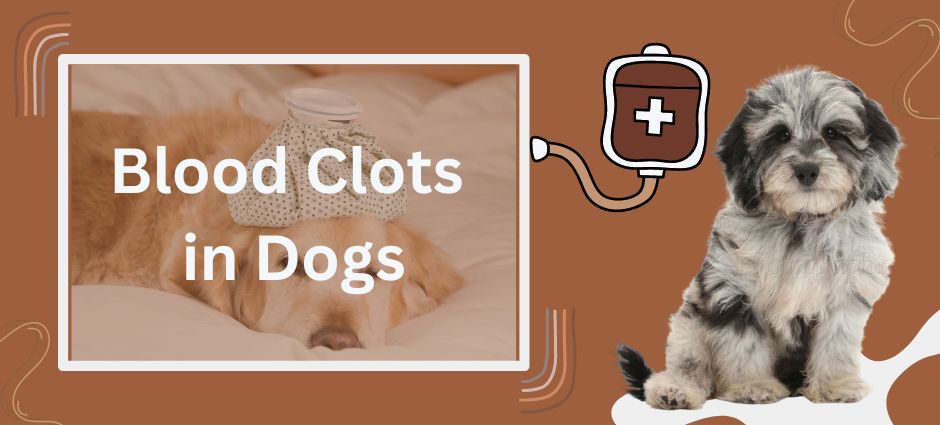Blood clots in dogs are a serious health concern that can quickly escalate into life-threatening situations. As a responsible dog lover, understanding the symptoms, causes, and treatment options is crucial for ensuring your dog’s well-being.
In this blog, we’ll delve into everything you need to know about blood clots in dogs, answer common questions, and discuss the various aspects of this condition.
So, let’s learn it more!
Can Blood Clots in Dogs be Survived?

One of dog owners’ most pressing questions is whether their chunky dog can survive a blood clot. The answer depends on the clot’s location, size, and how quickly it is addressed. Blood clots in dogs can occur in various parts of the body, such as the lungs, heart, or limbs.
A clot that forms in the lungs, known as a pulmonary embolism, or in the heart, can be fatal if not treated promptly. On the other hand, a clot in a limb may cause pain and mobility issues but is less likely to be immediately life-threatening.
Immediate veterinary attention is essential if you suspect your furry little dog has a blood clot. With prompt and appropriate treatment, many dogs can survive, but the prognosis depends on the specific circumstances of the clot.
Also read: Hygroma Dog Back Leg
Symptoms of Blood Clots in Dogs
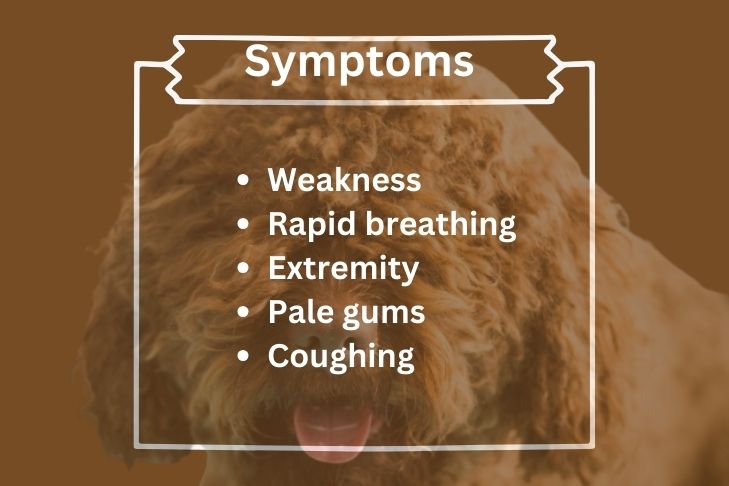
Recognizing the symptoms of blood clots in dogs is critical for early detection and treatment. Common symptoms include:
- Sudden weakness or lameness, especially in one limb
- Difficulty breathing or rapid breathing
- Swelling in a limb or extremity
- Pale gums or other mucous membranes
- Pain or discomfort that seems localized to one area
- Coughing, especially if the clot is in the lungs
In severe cases, a dog may collapse or exhibit signs of shock. If you notice any of these symptoms, you must run to the vet as soon as possible!
What Causes Blood Clots in Dogs?
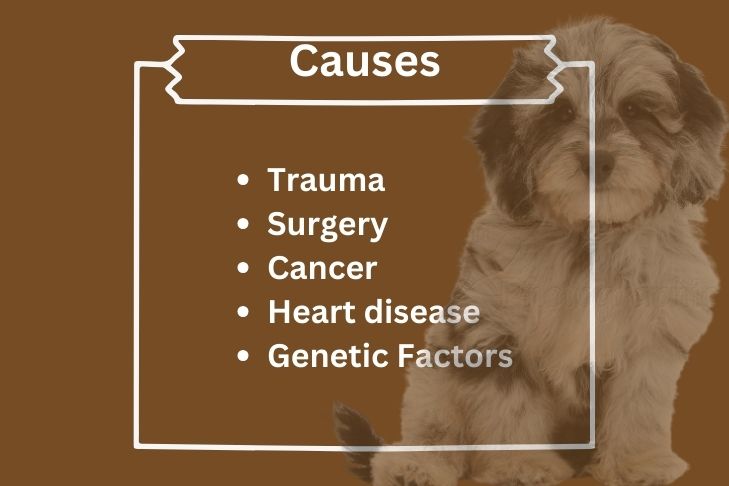
Various factors can contribute to the formation of blood clots in dogs. Some very commonly spotted causes in big fluffy dogs include:
- Trauma: Physical injuries can cause blood vessels to rupture, leading to clot formation.
- Surgery: Post-surgical complications may include the development of clots, particularly if the dog is immobilized for a long period.
- Cancer: Certain types of cancer, particularly those affecting the blood or bone marrow, can increase the risk of clotting.
- Heart Disease: Dogs with heart disease are at a higher risk of developing blood clots, especially in the lungs or heart.
- Genetic Factors: Some breeds are more predisposed to clotting disorders due to genetic factors.
Read About: Clear symptoms of end-stage liver disease in dogs
Understanding the underlying cause is crucial for determining the appropriate treatment and preventing future clots.
What Does It Mean if a Dog is Pooping Blood Clots?
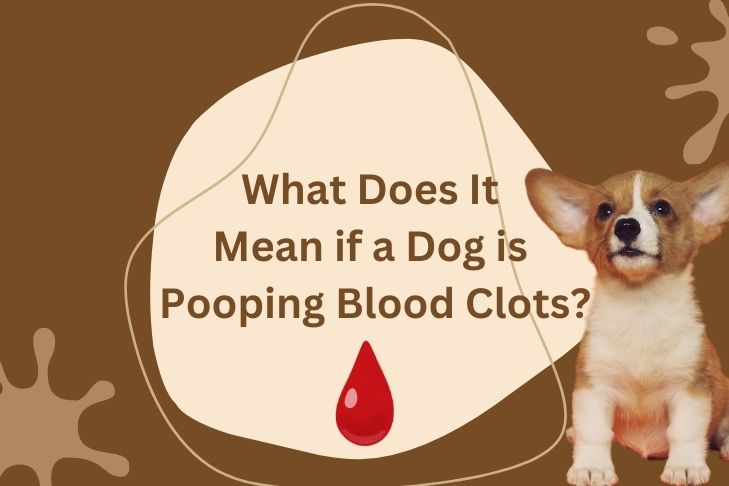
This is a serious symptom that requires immediate veterinary attention. Blood clots in the stool could indicate a severe internal issue, such as gastrointestinal bleeding or a clot in the intestines.
This condition can be life-threatening, and prompt diagnosis and treatment are essential. Your vet may conduct blood work, imaging, and stool analysis tests to determine the exact cause and prescribe the appropriate treatment.
Blood Clots in Dogs Treatment

Dog blood clot treatment varies depending on the clot’s location and the underlying cause. Common treatment options include:
- Anticoagulants: These medications help prevent further clot formation by thinning the blood.
- Thrombolytics: In some cases, drugs that dissolve clots may be administered.
- Surgery: In severe cases, surgical intervention may be necessary to remove the clot.
- Supportive Care may include oxygen therapy, pain management, and other supportive treatments to stabilize the dog.
To save your large fluffy dog’s life, you need to make sure you act promptly and take care of your pups.
How Fast Can a Blood Clot Kill a Dog?
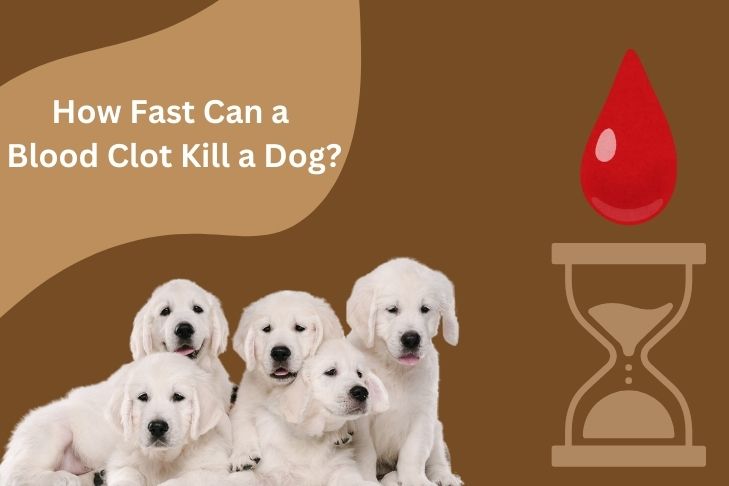
Unfortunately, the answer is quite quickly, especially if the clot forms in a critical area like the lungs, heart, or brain. A pulmonary embolism, for example, can be fatal within minutes if not treated immediately.
Dog blood clot death can be prevented with timely intervention and appropriate treatment. Regular veterinary check-ups, especially for chunky dogs with known risk factors like heart disease or cancer, are crucial.
Maintaining your dog’s overall health through a balanced diet, regular exercise, and prompt treatment of any underlying conditions can also reduce the risk of blood clots.
Conclusion
Blood clots in dogs are a serious medical condition that requires prompt attention. By understanding the symptoms, causes, and treatment options, you can better protect your furry friend from the dangers of blood clots.
Always consult your veterinarian if you suspect your dog is at risk or if you notice any unusual symptoms. Early intervention can make all the difference in ensuring your dog’s health and longevity.



